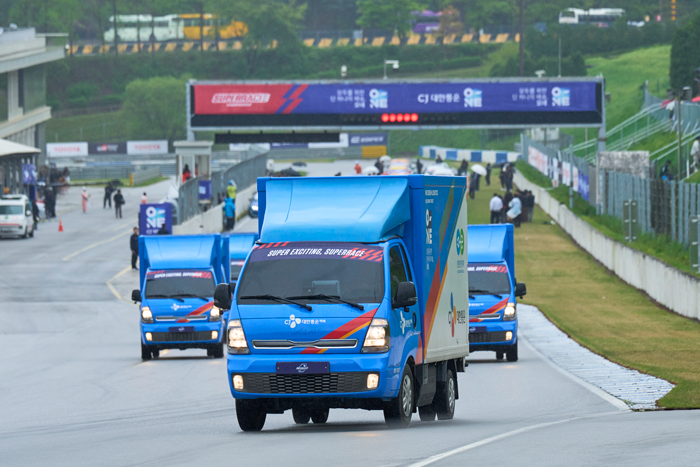Protecting Livestock From Flood Damage: A Comprehensive Guide

Table of Contents
Assessing Flood Risk and Vulnerability
Understanding your farm's vulnerability to flooding is the cornerstone of effective flood protection. A thorough flood risk assessment allows you to anticipate potential threats and implement preventative measures. This process involves several key steps:
- Analyzing historical flood data: Research past flood events in your area. Local authorities, historical records, and even local newspapers can provide valuable insights into flood frequency, severity, and patterns.
- Identifying potential flood sources: Pinpoint potential sources of flooding on your property. This could include nearby rivers, streams, drainage ditches, or even areas prone to flash flooding.
- Evaluating terrain and drainage characteristics: Assess your farm's topography. Low-lying areas, poor drainage, and lack of natural barriers increase your vulnerability.
- Using flood risk maps and online resources: Utilize online resources like FEMA flood maps (in the US) or equivalent resources in your country to identify your farm's flood zone and potential flood depth. These maps offer valuable information for effective farm flood planning.
- Collaboration with local authorities and weather services: Stay informed about weather forecasts and flood warnings issued by local authorities. They can provide crucial information regarding impending flood threats, allowing for timely preparation and evacuation.
Effective flood risk assessment is crucial for livestock vulnerability mitigation. This process helps you determine your farm's flood zone and plan accordingly, ensuring the safety of your animals.
Pre-Flood Preparations and Mitigation Strategies
Proactive preparedness is paramount when it comes to protecting livestock from flood damage. A well-defined plan can make all the difference between minimizing losses and facing catastrophic consequences. Key pre-flood preparations include:
- Developing an emergency evacuation plan for livestock: This plan should detail evacuation routes, designated safe zones, and the responsibilities of each team member. Practice drills to ensure efficiency and coordination during an actual emergency.
- Identifying high ground or safe areas for relocation: Locate areas on your property that are elevated and unlikely to be affected by floodwaters. These safe zones should have adequate space for your livestock and access to resources.
- Securing feed and water supplies in a safe location: Store sufficient feed and water in a location that is well above the expected flood level. This ensures your animals have access to essential resources during and after the flood.
- Creating a readily accessible emergency kit: Assemble a kit containing essential tools (ropes, shovels), medications, first-aid supplies, and any other items necessary for livestock care during an emergency.
- Establishing communication protocols: Determine how you will communicate with neighbors, authorities, and other key individuals during a flood event. This ensures everyone is informed and can assist in the evacuation and care of livestock.
Furthermore, implementing effective flood mitigation techniques strengthens your farm's resilience:
- Improving drainage: Invest in improving drainage systems around livestock enclosures to prevent water accumulation.
- Constructing flood barriers or levees: Building physical barriers can help divert floodwaters away from critical areas.
- Elevating barns and feeding areas: Elevating structures reduces the risk of flood damage to crucial infrastructure.
- Investing in flood insurance: Flood insurance provides financial protection against significant losses caused by flooding. Proper flood preparedness is essential for minimizing damage and ensuring the safety of your livestock.
Protecting Pastures and Grazing Areas
Protecting pastureland is vital for maintaining your livestock's health and ensuring long-term farm sustainability. Strategic measures can significantly reduce flood damage to grazing areas:
- Soil conservation measures: Implement soil conservation practices to improve drainage and prevent erosion. This includes techniques such as terracing, contour plowing, and the use of cover crops.
- Post-flood pasture restoration: Following a flood, assess the damage to your pastures and implement appropriate restoration strategies. This might involve re-seeding damaged areas, repairing fences, and removing debris. Careful pasture protection is essential for the long-term health of your grazing land.
During a Flood: Emergency Response and Livestock Evacuation
When a flood warning is issued, act swiftly and decisively. Your emergency plan should be activated immediately:
- Follow your evacuation plan: Begin the process of moving your livestock to the pre-identified safe zones. Prioritize the most vulnerable animals.
- Safe and efficient evacuation: Use calm and controlled animal handling techniques to avoid panic and injury. Work as a team to ensure a smooth and efficient evacuation.
- Immediate veterinary attention: If animals are injured or show signs of stress, seek immediate veterinary attention.
- Monitor flood levels and weather updates: Continue to monitor flood levels and weather reports, adjusting your response as needed. Effective flood response requires preparedness, calm action, and a focus on the well-being of your livestock.
Post-Flood Recovery and Livestock Care
Post-flood recovery is a crucial phase, requiring careful attention to animal health and infrastructure repair:
- Cleanup and sanitation: Thoroughly clean and disinfect barns, enclosures, and water sources to prevent the spread of diseases and parasites.
- Disease and parasite prevention: Be vigilant about potential disease outbreaks and implement appropriate preventative measures.
- Veterinary checkups: Conduct thorough veterinary checkups for all animals to assess their health and address any health issues resulting from the flood.
- Pasture restoration and rebuilding infrastructure: Begin repairing damaged pastures and rebuilding any damaged infrastructure.
Post-flood recovery is a time-consuming process, but careful attention to detail is crucial for ensuring the long-term health and well-being of your livestock.
Protecting Your Livestock from Future Flood Damage
This guide emphasizes the critical importance of proactive planning and preparation in protecting livestock from flood damage. By implementing the strategies outlined above – from assessing flood risk and developing an emergency plan to implementing mitigation techniques and ensuring post-flood recovery – you can significantly reduce the impact of floods on your farm and your animals. Remember, effective livestock flood protection is an ongoing process, requiring vigilance and adaptation. Develop a comprehensive plan today for protecting livestock from flood damage. Your animals’ safety depends on it! For additional resources on flood preparedness and livestock protection, consult your local agricultural extension office or government agencies. Consider searching online for "livestock flood protection" or "flood damage prevention for livestock" for more specific guidance in your region.

Featured Posts
-
 Cj
May 07, 2025
Cj
May 07, 2025 -
 Could A Steelers Packers Trade Make Josh Jacobs A Green Bay Wr 1
May 07, 2025
Could A Steelers Packers Trade Make Josh Jacobs A Green Bay Wr 1
May 07, 2025 -
 Timberwolves Exploit Randles Physical Presence Against Lakers
May 07, 2025
Timberwolves Exploit Randles Physical Presence Against Lakers
May 07, 2025 -
 Long Lasting Love Ralph Macchios Hollywood Free Marriage
May 07, 2025
Long Lasting Love Ralph Macchios Hollywood Free Marriage
May 07, 2025 -
 Navrat Svetoveho Pohara Nhl Oficialne Potvrdila Rok 2028
May 07, 2025
Navrat Svetoveho Pohara Nhl Oficialne Potvrdila Rok 2028
May 07, 2025
